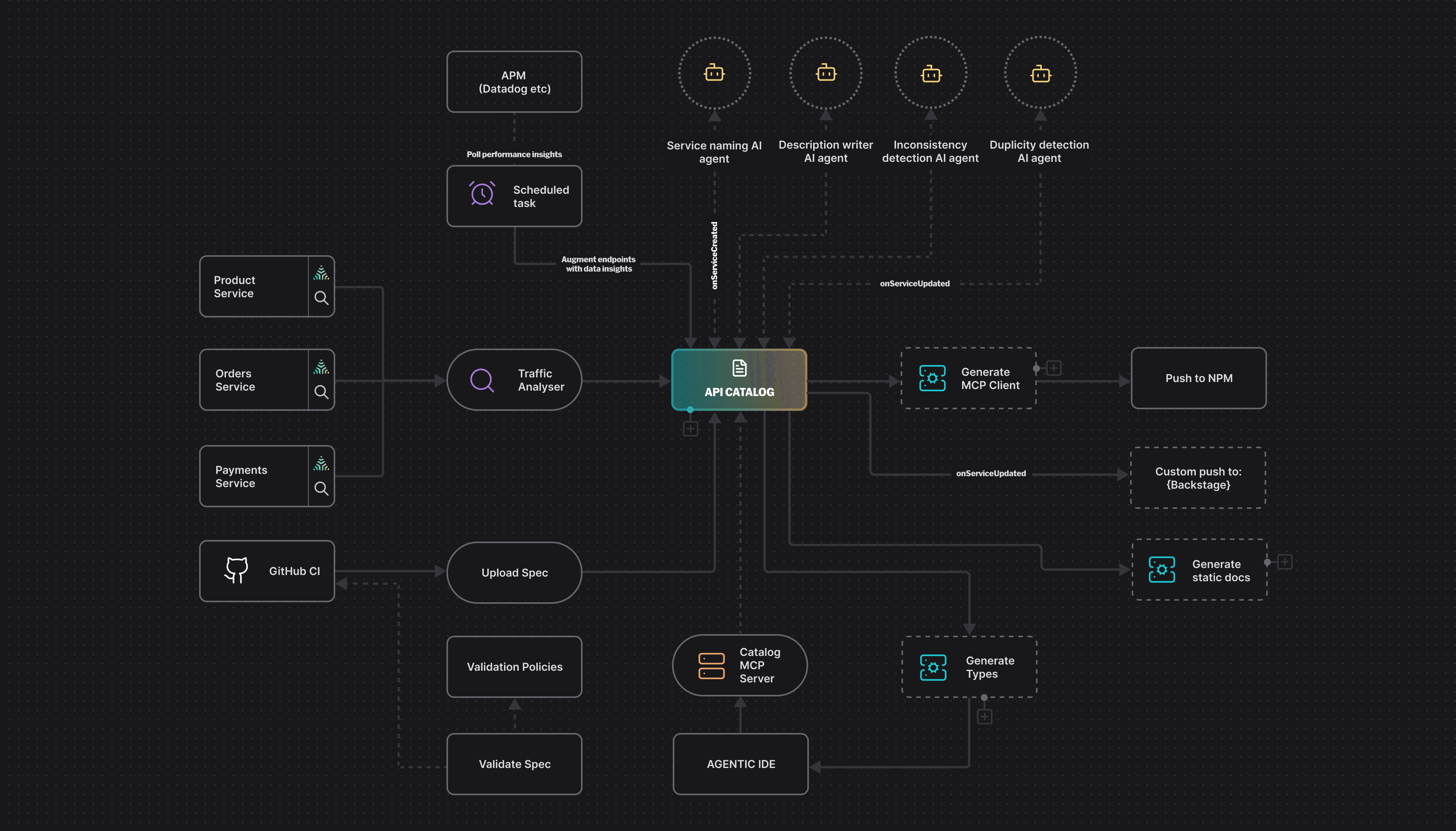The API Schema
Automation Platform
for _
The programmable automation layer for your API schema lifecycle. Unifying discovery, validation, documentation, and AI agent automations. Offline-first and real-time.
Automated API Intelligence
We unify schema capture, validation, documentation, and AI integration into a developer-first, agentic platform that automates your API infrastructure while you sleep.
Open Integration Fabric
Export and transform APIs across any platform. No vendor lock-in.
Schema-First Automation
Capture schemas from traffic to CI. Your API's source of truth.
Agent-First Future
Bridge APIs to autonomous agents with MCP generation and safe evolution.
Programmable Layer
Build custom automations or use templates to get started.
Schema Validation
Real-time validation, linting, and security analysis for APIs.
APM Integrations
Track API usage, performance, and errors in real-time.
Built for Disconnected Development
Work seamlessly whether you're online, offline, or somewhere in between. Appear's offline-first architecture ensures your development workflow never stops, with intelligent syncing and agentic IDE integration.
Real-time Sync Engine
Bidirectional syncing reconciles schema changes offline. Seamless team updates on reconnect.
Local MCP Servers
Your schemas, resources and curated Catalog are always available to your workflow agents, even offline.
Agentic IDE Integration
AI understands your context-enriched APIs in real-time, online or offline.
Composable by design. Programmable DX.
Bring your own hooks, write your own automations, publish your own modules. Appear is AI-native at the core, turning your API schemas into programmable, living infrastructure.

Node-Based Schema Editor
Custom Automation Workflows
AI-Powered Schema Insights
See Your Services in Development, Instantly.
Appear's introspector agent works silently within your network, observing API traffic in real-time. It automatically detects new endpoints, captures request/response payloads, and infers schemas with no manual configuration.
Explore Discovered Schemas
Automatically detected API schemas are presented in a structured, detailed, navigable format, with generated titles and descriptions to enrich the developer and agent experience.
Schema reported. Generating API reference...
Integrate Appear in Minutes
Get started with Appear's powerful API schema automation with just a few lines of code. Follow these simple steps to install, configure, and activate the introspector agent.
Install the Introspector Agent
Add Appear to your project with a single package installation using your preferred package manager. This lightweight agent runs in your server environment to observe API traffic.
npm install @appear/introspector
# or
yarn add @appear/introspector
# or
pnpm add @appear/introspectorNotes from our supporters
See how these organisations experience Appear.
"This works like magic, I can’t believe the level of detail you’re able to produce automatically!"
"Why hasn’t anyone thought of this before?"
"I’m so surprised at how well you captured all our APIs, this is fantastic!"
Frequently Asked Questions
Get answers to common questions about Appear and how it can help streamline your API development workflow.
Transform Legacy APIs Into
AI-Ready Infrastructure
Appear automatically evolves your legacy APIs into AI-ready infrastructure while you sleep. Our introspector agent captures schemas from live traffic, creating the deterministic, enriched, self-describing APIs that AI systems demand—without rewrites.
Simple pricing so everyone can use Appear
Appear comes with everything you need to automate your API schema lifecycle at any scale.
Starter
Perfect for small projects and getting started with API automation.
- All features
- Up to 3 seats
Pro
Everything in Starter with enhanced features for growing teams and production APIs.
- All features
- For teams & organisations